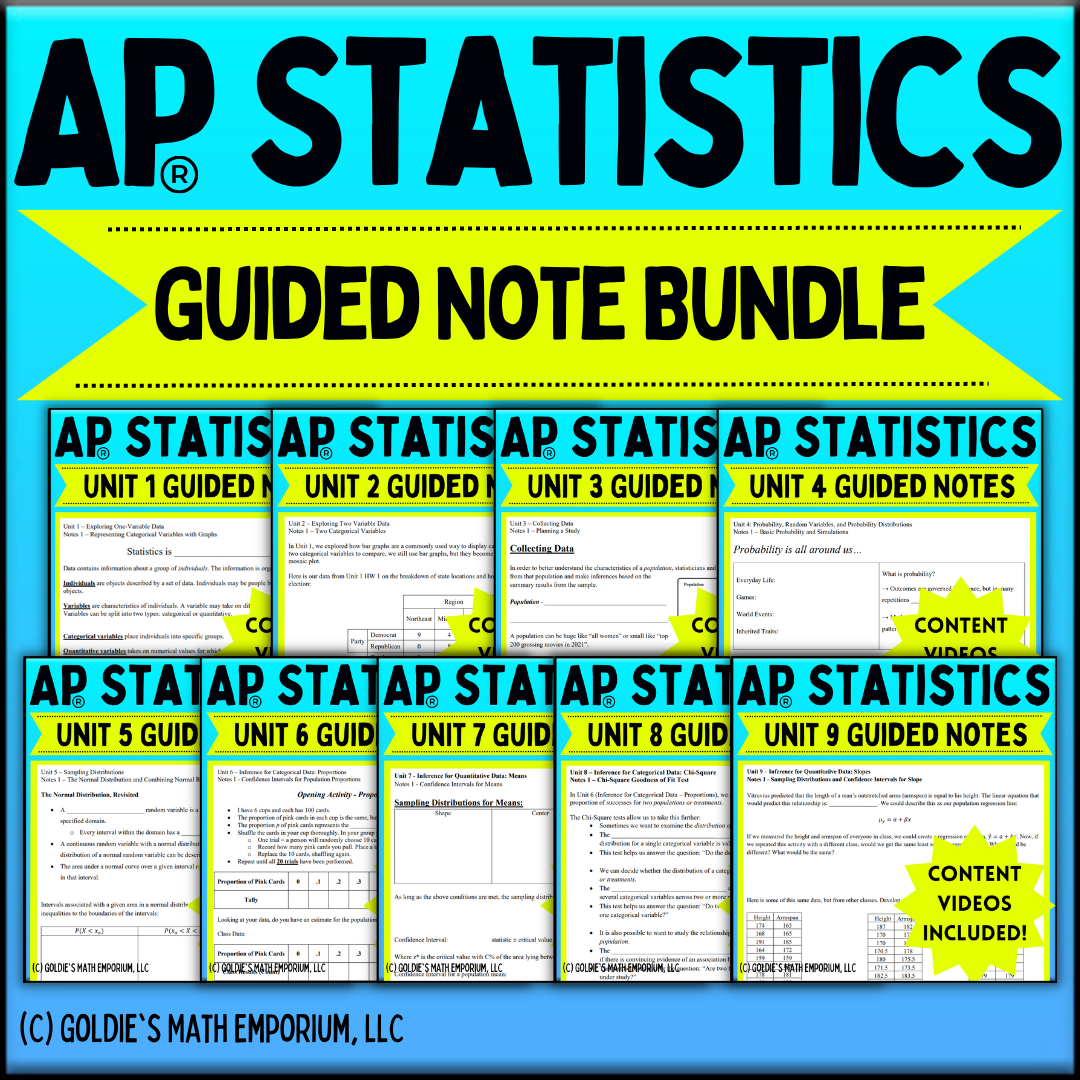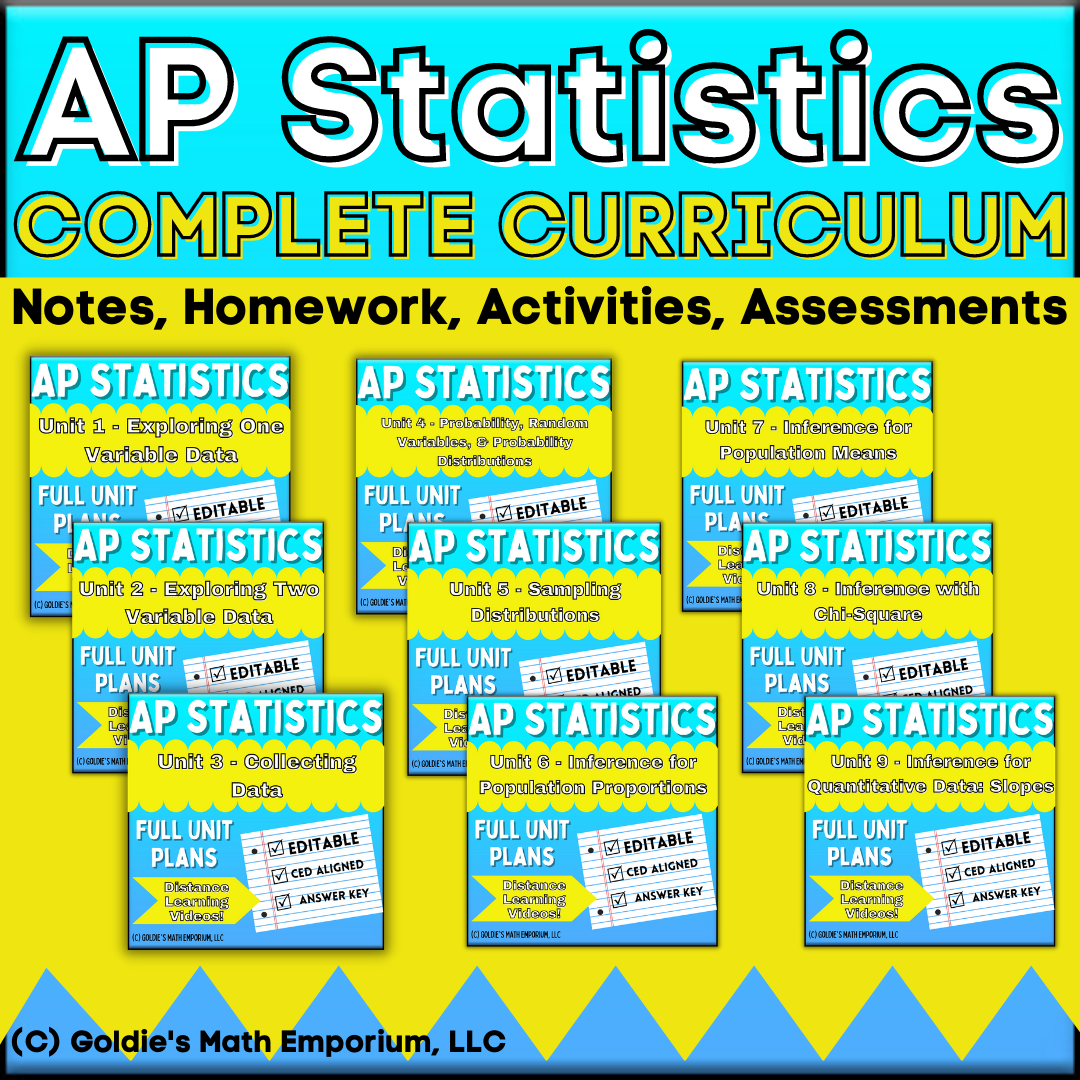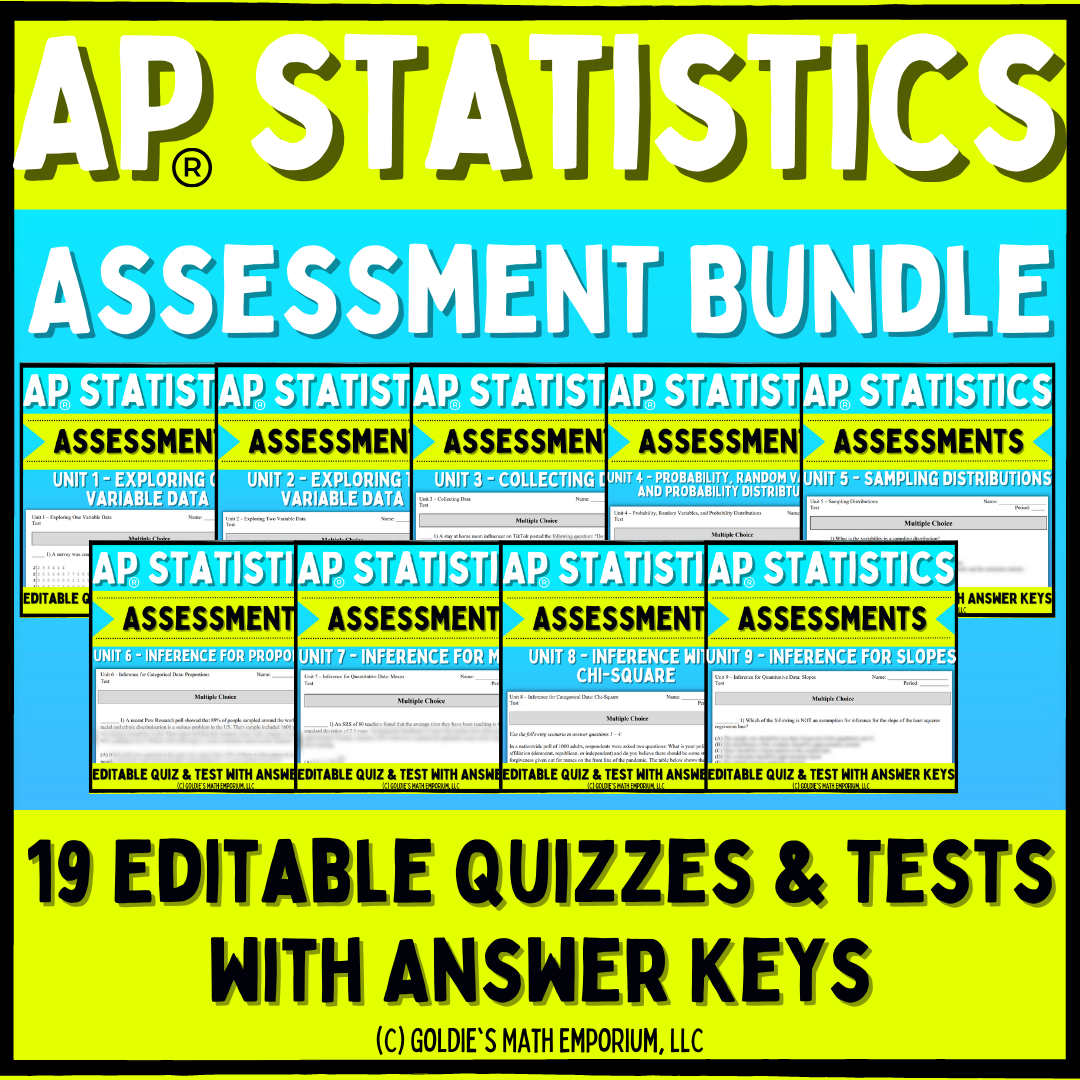*NEW AND UPDATED for 24/25*
I’m so happy you found your way here! I’m Goldie, and in this post, I want to deep dive in my Unit 5 curriculum, as well as update you on some exciting changes I’ve made to the curriculum for the 24/25 school year and beyond.

Disclaimer: I am a classroom teacher of 10+ years. All the commentary in this post is based on my personal experience; please do not think you must teach Unit 5 this way, or that this is the absolute best practice in the classroom. This is what has worked for my students and pulled very successful exam scores through the years.
First thing is first, what has changed???
I recently made some BIG updates to this curriculum and I wanted to share a general overview of what has been improved.
New Guided Notes
A few of the notes ended up spanning a few days, so I broke the notes up, made them more concise, and overall just implemented a better flow of information for teachers and students.
PowerPoint presentations for all of the guided notes
With and without transitional slides to help teachers present the material in their classroom
New Videos
Shorter, more condensed videos to help students in a flipped classroom, absent students, or students who are working independently on the material
New Assessment
I have a BRAND NEW unit test! This test is 15 multiple choice questions and a comprehensive free response problem. There is also a grading scale now included
New homework assignments
The homework assignments have been completely redone with new problems, scaffolded questions, and a clearer answer key.
New Activity: Simulation of a Sampling Distribution for a Sample Proportion
This was previously an activity done at the start of Notes 2, but because it took a full day, I made a separate activity, plus added some cards you can print off to easily implement this in your class
New Activity: Simulation of the Central Limit Theorem
This was an activity I created to help students see the central limit theorem in action, AND to see how increasing the sample size reduces the spread of the sampling distribution. Students perform this simulation using die rolls and it should take about a 50 minute class period to implement before Notes 4.
New Unit 5 Summary Lesson
The summary presentation was updated for a better flow and made easier to see from a distance
Updated Activities
The Penny Ages Activity and Normal Approximation to the Binomial Project got a facelift and a more detailed answer key
I’ve been so excited to roll out these updates for you and they are now available! If you purchased my resources from TPT, you can download the updated versions there. If you purchased these resources in my Emporium, send me an email and I will give you these updates FOR FREE!
Deep Dive: Sampling Distributions Content
Notes 1
In this section of notes, we revisit the Normal Distribution, this time in the context of the Normal Random Variable. Some teachers like covering this when we talk about Probability Distributions, but I think this provides the perfect intro into sampling distributions, because it will lead into a very important idea:
The Normal Probability Distribution asks the question: “What is the probability that a SINGLE randomly selected variable …”
The Sampling Distribution asks the question “What is the probability that in a SAMPLE OF n randomly selected variables …”
This distinction is important because students often would confuse the two, but since I started talking about them together, I’ve seen a huge positive difference in their understanding.
Then there is “Combining Normal Random Variables”, which again, might seem out of place at first, but I really like revisiting the combining random variables information we learned about in Unit 4 with Normal Random Variables right before we talk about the differences in sample proportions and means. I think this really helps students see the connections between all the formulas (and there are A LOT of formulas), and I’ve had more success this way.
Activity: Simulation of a Sampling Distribution for a Sample Proportion
I LOVE this opening activity. I created cards that are easy to print off and prepare this activity with. You can choose to have students complete this activity in groups or individually, but the end result is very cool to see!
There are 100 cards, 50 with a green check and 50 with a red X. Starting this activity, we talk about how in the population, the proportion of checks in the population is 0.5, and how due to the idea of sampling variability, if we pull out 10 cards (without replacement) from our population, we would expect 5 of the 10 cards to be checks, but we would not be surprised if we didn’t get that. From there, I let them know that we will be completing 20 trials of pulling out 10 cards and reporting how many check cards we get. They will pull the 10 cards without replacement, record the number of check cards, and then put those 10 cards back. They will shuffle the cards and then complete the next trial.
Some students, at this point, already have an idea that we will end up getting a unimodal distribution, centered at 0.5, which is so amazing. Some data will look like that, but it isn’t until we pull all the trails together for the class data that we end up seeing a truly approximately symmetric, unimodal distribution (and spoilers, it’s approximately normal too!). This leads to a big discussion on the graphs of the population distribution, the sample data distribution, and the sampling distribution.
Notes 2 and 3
These two sections of notes formally define a sampling distribution for a sample proportion and a sampling distribution for a difference in sample proportions.
Notes 4 and 5
These two sections of notes formally define a sampling distribution for a sample mean and a sampling distribution for a difference in sample means.
Right before you start Notes 4, you can choose to complete my new activity, “A Simulation of the Central Limit Theorem.
The Central Limit Theorem (CLT) is an exciting idea in statistics: no matter the population shape, the sampling distribution will become closer to a normal distribution the larger your sample size is. Technically the CLT tells us what would happen in the long run, but it starts to work pretty quickly in the short run, as students can see in the simulation!
Here’s a good definition for us: Central Limit Theorem – The mean of a random sample is a random variable whose sampling distribution is approximately normal when n is “large enough”. “Large enough” really does depend on a lot of factors. If the population is already normal, a small n will do just fine to get a sampling distribution that is approximately normal, but in a strongly skewed population, we do need a larger sample size for the sampling distribution to be approximately normal. The “rule of thumb” for any population that is non-normal is n has to be greater than or equal to 30. If you think about that, that’s a pretty small sample size to already be seeing long-term results!
Keep in mind too that the CLT only talks about the sampling distribution and does not assume anything about the sample distribution. One could argue that the sample distribution will probably look like the population distribution, but we’ve seen where the sample distribution does not follow any pattern, so we don’t make any assumptions about it.
Extra Ideas
Formula Sheet
- Take some time to have students look at the formula sheet provided by the college board; all the notations and formulas are there! The notations and symbols they are using in the notes are exactly the same notation and symbols they will see on the formula sheet and the AP exam. It is important for students to get to know the formula sheet layout and become comfortable with the organization early. I allow students to use this formula sheet (Starting on Page 267 from the AP Stat CED) on the assessments.
Penny Ages Activity
- This activity highlights the relationship between the population distribution, the sample distribution, and the sampling distribution, as students gather data on the ages of pennies. This lets students see a great visual of the sampling distribution for a sample mean in action. There is an Excel Spreadsheet with the penny data already entered in if you would like to use that, or you can prep your own penny population!
Unit Project
- For their Unit 5 project, I have students complete the “Normal Approximation to the Binomial” activity. The content is not required for the AP exam, but it builds a really cool and significant connection between the Binomial random variable and the Normal calculations.
Circuit Activity
- My students have been LOVING the circuit activities, which lets them practice all the problems they see in this Unit. Students always tell me they “don’t know how to start the problem”, and I think they have trouble identifying if the problem needs to be answered with a normal random variable, a sampling distribution for a proportion, a mean, a difference of proportions (or means), or a combining normal random variables problem. This activity really helped them differentiate between the problem types and gave them a lot of confidence!
Coming up, Unit 6 is all inference for proportions. We cover both confidence intervals and hypothesis testing for proportions and a difference in proportions. The sampling distributions for proportions we created in this unit will be critical to our success in Unit 6. All the information on the sampling distributions for means will be applied when we cover inference for means in Unit 7.
Ready for some resources to help you teach Unit 5? Check out all of my Unit 5 materials below!
- COMPLETE Unit 5 Sampling Distribution Plans
- Unit 5 Sampling Distribution – Guided Notes
- Unit 5 Sampling Distribution – Projects and Activities
- Unit 5 Sampling Distribution – Homework Assignments
- Unit 5 Sampling Distribution – Assessments
- Sampling Distributions Review Lesson – FREE!!!
- Activity: Sampling Distributions with M&Ms
- Sampling Distribution Multiple Choice Questions
Get the complete curriculum teachers are raving about!!
“It is my first time teaching AP Stats. I majored in math, but I did not take the analog to this class when I was in college. These resources have made it possible to come to class fully prepared for my students. I watch the videos before I teach. 100% would buy it again.” — Merry
“As a first year AP Stats teacher, this has been a God send. It has been such a time saver having the lessons already created, the answer keys available. The pacing guides are so helpful, the activities and projects are fun, the quizzes and tests are so carefully created to reflect learning goals. Would definitely recommend! Thanks so much for creating this!” — Krista




0 Comments